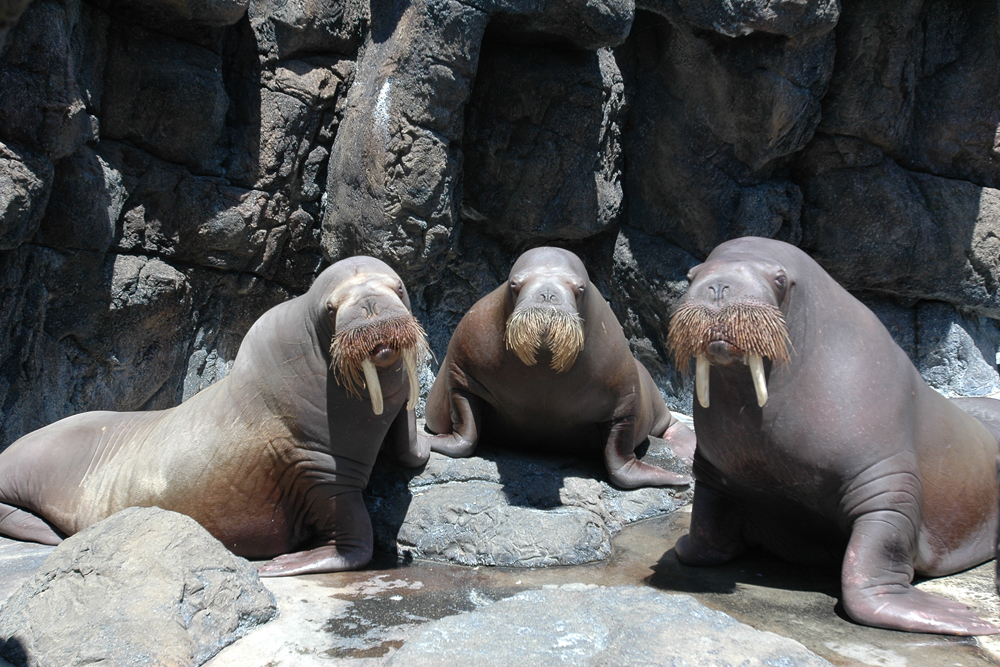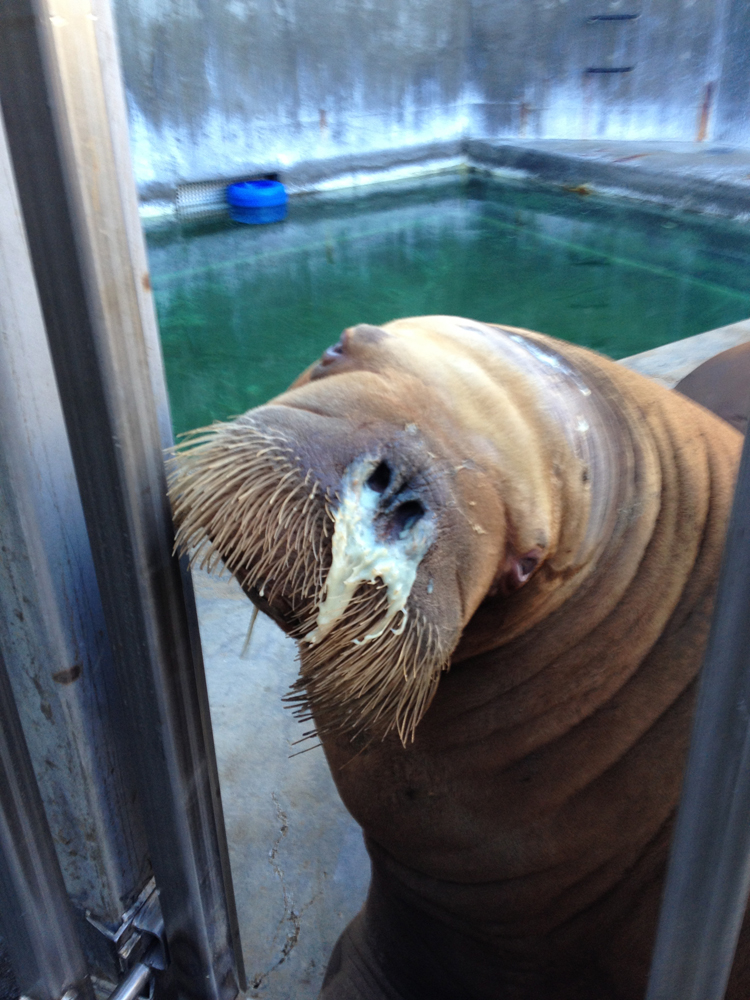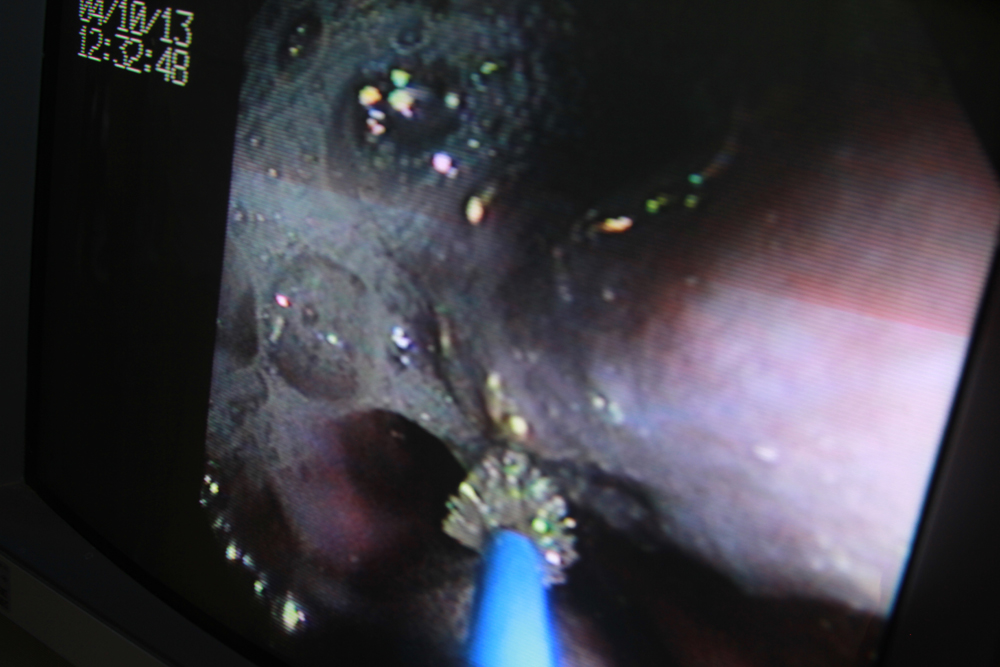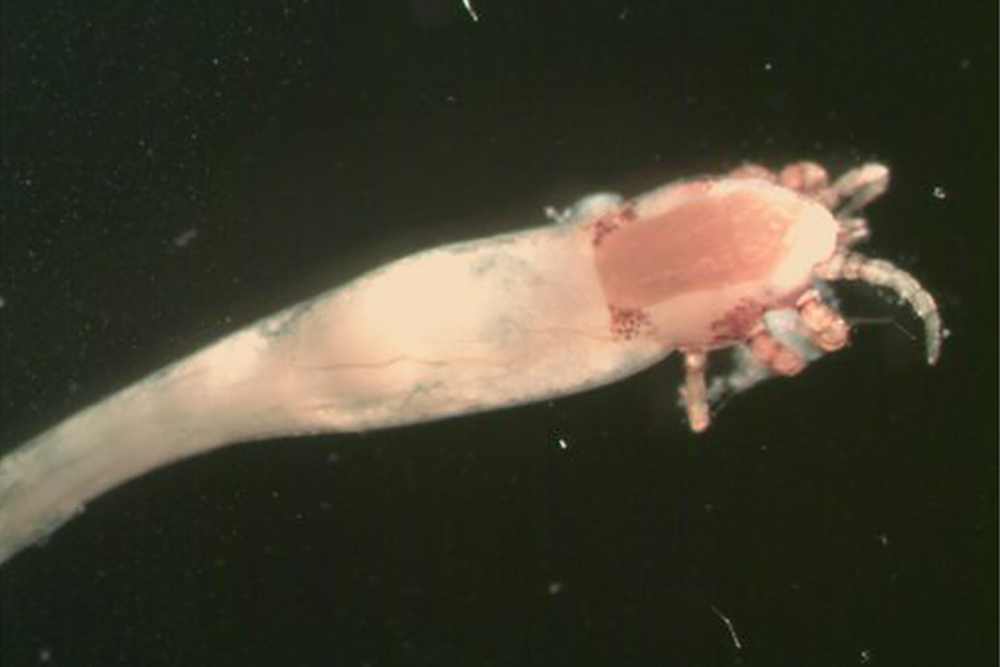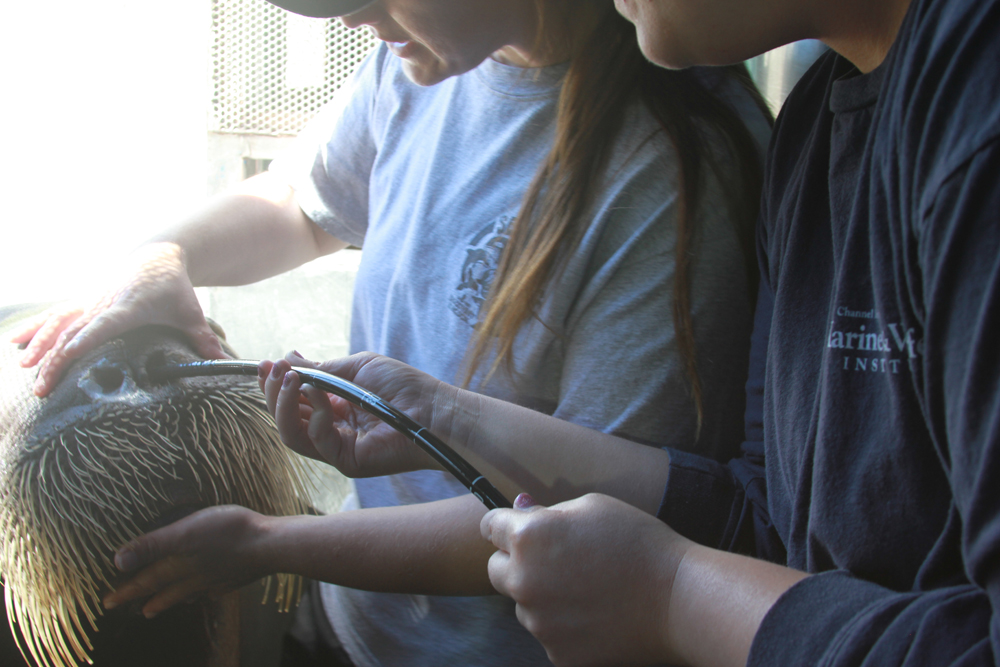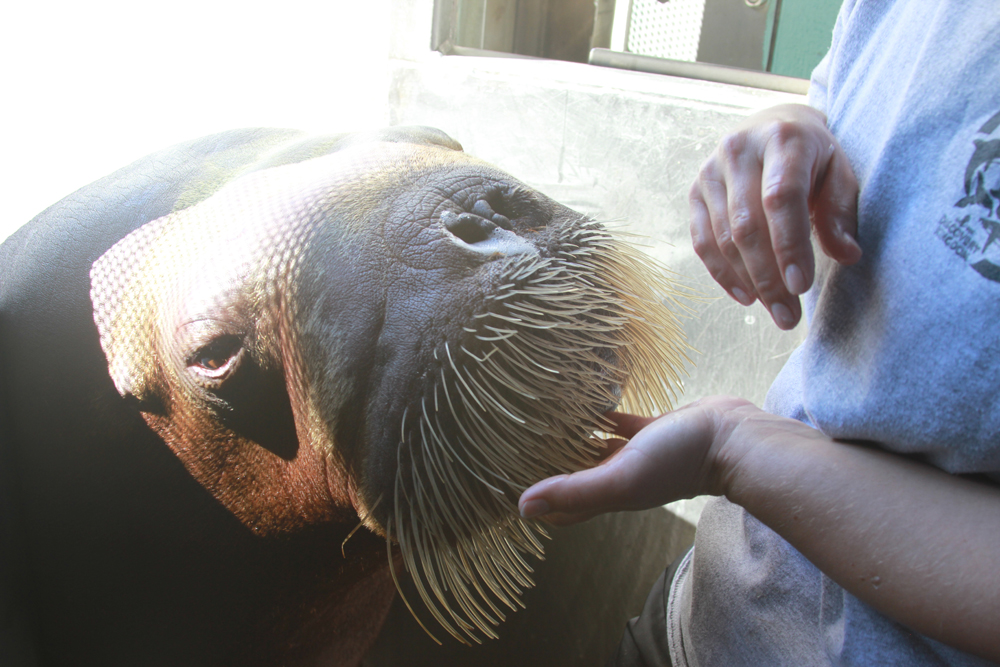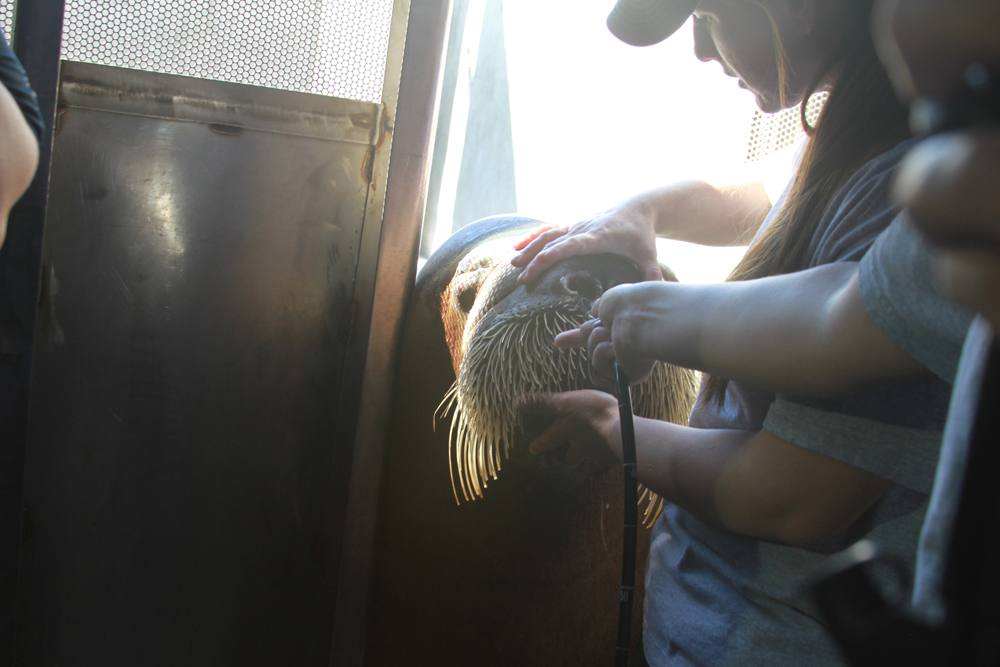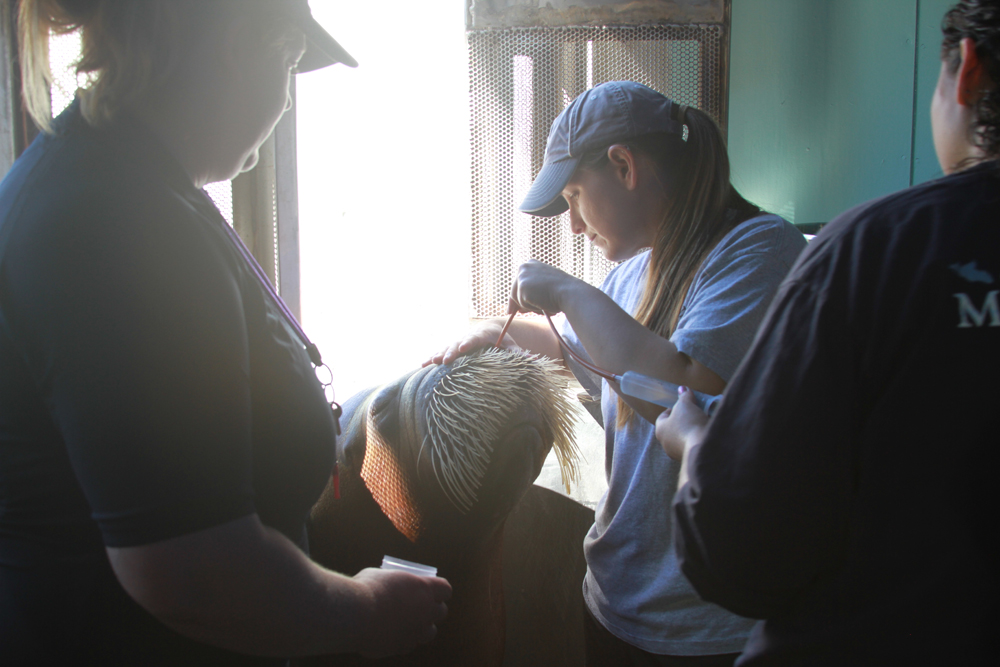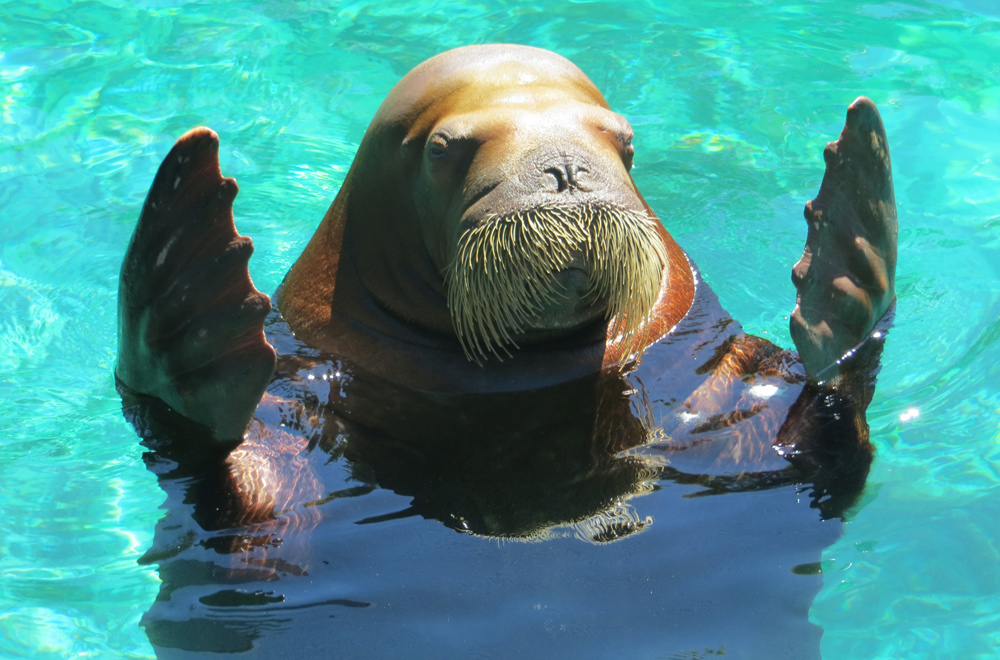Sick Siku: Photos of a Runny-Nosed Walrus
A runny-nosed female walrus at Six Flags Discovery Kingdom had veterinarians concerned that she was suffering from more than just a common cold. As it turned out, the 22-year-old walrus, named Siku, was suffering from a parasitic infection that was causing the rivers of snot. [Read full story about how the cause of Siku's runny nose]
Three Walruses
A healthy Siku the walrus is flanked by her two companions at Six Flags Discovery Park in Vallejo, California. All three walruses were orphaned as pups in Alaska and have lived in captivity since. At age 17, though, Siku came down with a runny nose that wouldn't go away. (Credit: Six Flags Discovery Kingdom)
Runny nose
A sick Siku with copious yellow nasal discharge pouring from her nostrils. Initially, antibiotics helped clear the flow, according to Six Flag veterinarian Vanessa Fravel. But once the antibiotic course was over, the mucus came back. (Credit: Six Flags Discovery Kingdom)
Sleeping Siku
Thick snot kept Siku from breathing comfortably, and she soon began breathing through her mouth, like a person with a bad cold. As the weeks went on with no relief, she became lethargic and lost her appetite. (Credit: Copyright 2016 British Veterinary Association)
Get the world’s most fascinating discoveries delivered straight to your inbox.
Walrus medicine
It's difficult and dangerous to anesthetize a 2,000-pound walrus. So veterinarian Vanessa Fravel and trainers at Six Flags Discovery Park taught Siku to accept a scope up her nose. First, she was rewarded for simply opening her nostrils; then, for accepting a cotton swab up her nose. Gradually, trainers worked with Siku to accept tubing up her nose for 30 seconds to a minute, enough time to get a sample of the mucus inside her nostrils. (Credit: Six Flags Discovery Kingdom)
Walrus rhinoscopy
An internal view of a walrus rhinoscopy. A small brush pushed through the scope collects a sample from a couple inches into Siku's nasal passage. Upon seeing the sample, Fravel realized that Siku's nose was infested with parasitic mites. She was surprised, but relieved, she told Live Science — mites are a treatable ailment. (Credit: Six Flags Discovery Kingdom)
Mites inside
A view of the rhinoscopy brush inside Siku's nasal passages. The undulating pink tissue is the mucosa of the nasal turbinate, the bone inside the nasal passages. The white specks clinging to the mucosa are mites, later discovered to be of the species Orthohalarachne attenuate. (Credit: Copyright 2016 British Veterinary Association)
Surprising mite
Orthohalarachne attenuate commonly infect the nasal passages of wild sea lions and seals, but there is only one report of them infecting walruses in the wild, and only two reports of captive walruses plagued by these parasites. This mite is about 0.16 inches (4 millimeters) long. (Credit: Copyright 2016 British Veterinary Association)
Patient walrus
A vet tech inserts a scope into Siku's nose as a trainer keeps a hand on the walruses' snout and chin. It took a month to train Siku and her fellow walruses to accept the scope so that veterinarians could diagnose the cause of Siku's runny nose. (Credit: Six Flags Discovery Kingdom)
Open wide
The first step in training the walruses to accept the rhinoscopy procedure was to train them to open their nostrils on demand. Here, Siku opens her nostrils, a behavior she learned to do in order to get a treat. Yellowish-white discharge can be seen on her right nostril. (Credit: Six Flags Discovery Kingdom)
Scoping it out
Although Siku was trained, walruses can be unpredictable. So staff members conducted their nose examination from behind a half-door, in case Siku became distressed and tried to charge them. Luckily, the procedure went smoothly, Fravel told Live Science. (Credit: Six Flags Discovery Kingdom)
Walrus in training
Before bringing in real equipment, Six Flags Discovery staff members used plain plastic tubing to teach Siku to accept objects in her nostrils. Fravel and her colleagues were confident in their ability to train Siku and the other walruses at the park, because all three had previously been trained to accept artificial insemination for walrus breeding programs. (Credit: Six Flags Discovery Kingdom)
In a walrus head
Initially, veterinarians tried other ways to diagnose Siku's problem. Blood testing revealed elevated white blood cells, a sign of an immune response to some infection, but no other hints as to the ultimate cause of the persistent nasal discharge. Samples of the mucus taken from outside of the nostril revealed nothing out of the ordinary. This skull radiograph likewise appeared normal. (Credit: Six Flags Discovery Kingdom)
Swimming Siku
A treatment with the anti-parasitic medication ivermectin knocked out the parasite infection and got Siku swimming happily again. Veterinarians aren't sure how Siku got the parasites. The two other walruses she lived with had some nasal mites, too, though not enough to cause symptoms (they were also treated). All three could have harbored them in the wild, or Siku may have caught them while on breeding loan, Fravel and her team reported in the journal Veterinary Record Case Reports. Or trainers at Six Flags may have inadvertently transferred mites from wild-born sea lions at the park to the walruses. The park now strictly enforces hand-washing between exhibits for its trainers, Fravel said. (Credit: Six Flags Discovery Kingdom)
Follow Stephanie Pappas on Twitter and Google+. Follow us @livescience, Facebook & Google+.

Stephanie Pappas is a contributing writer for Live Science, covering topics ranging from geoscience to archaeology to the human brain and behavior. She was previously a senior writer for Live Science but is now a freelancer based in Denver, Colorado, and regularly contributes to Scientific American and The Monitor, the monthly magazine of the American Psychological Association. Stephanie received a bachelor's degree in psychology from the University of South Carolina and a graduate certificate in science communication from the University of California, Santa Cruz.


